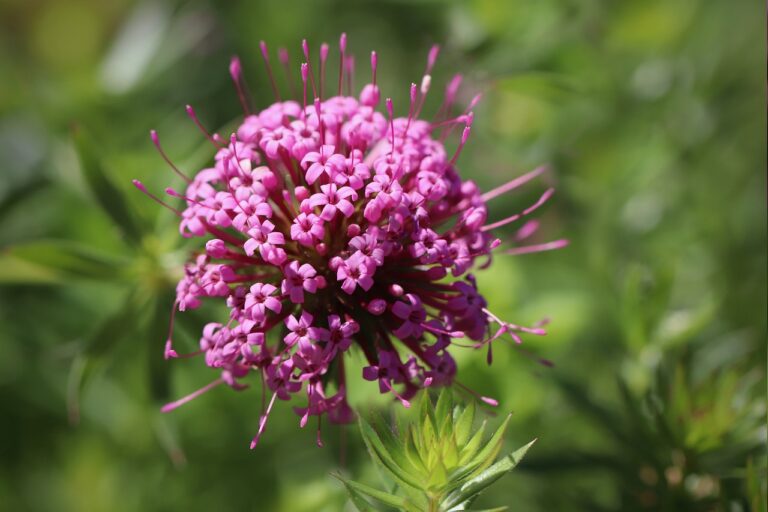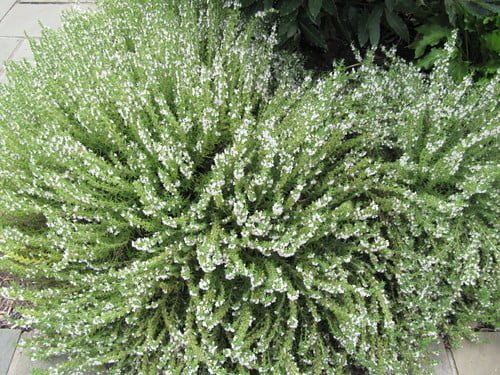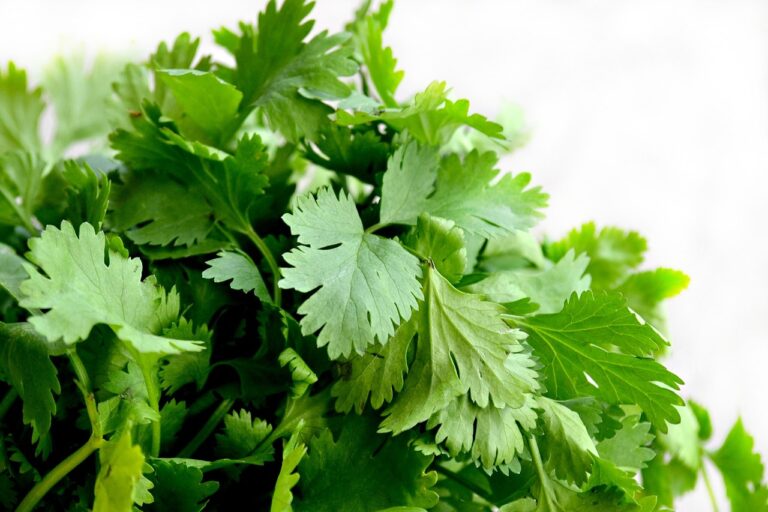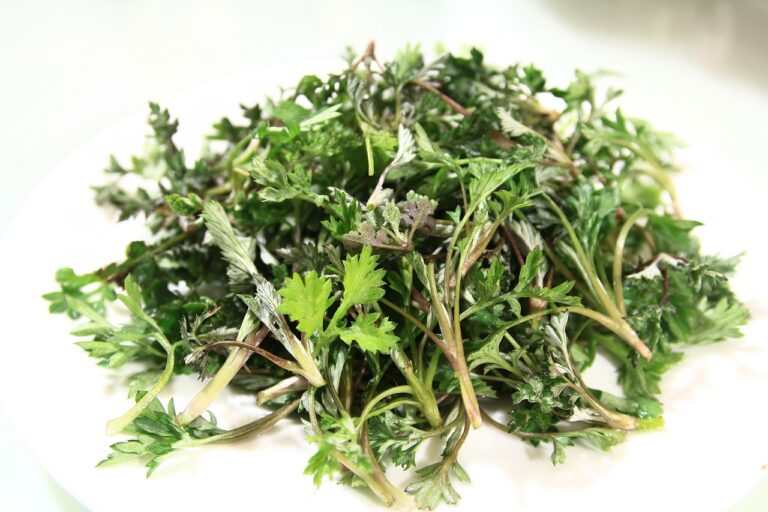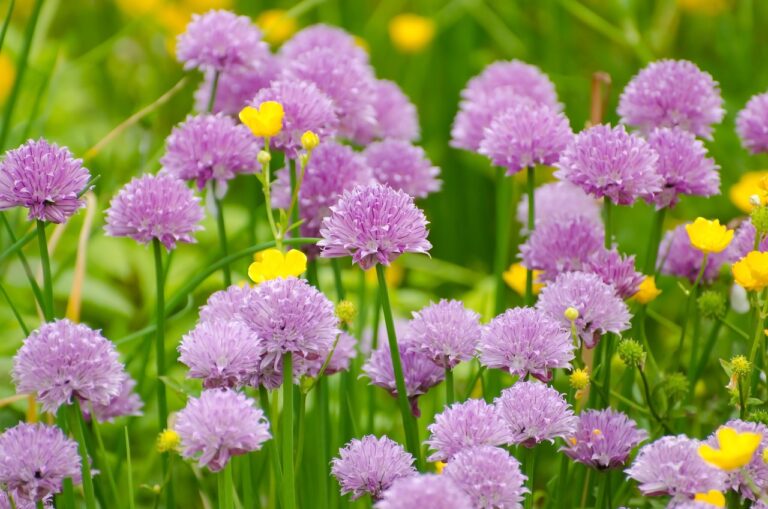Parsleyable
As someone who loves herbs, I can tell you that ‘parsleyable‘ refers to the amazing versatility and health benefits of parsley. This herb is packed with essential nutrients like vitamins A, C, and K, antioxidants, and diuretic properties. It can freshen your breath, reduce inflammation, and enrich the flavor and nutrition of your dishes. From growing parsley in your garden to preserving it for later use, there are countless ways to enjoy this herb. If you want to discover more about how parsley can enrich your culinary creations and boost your health, there’s a wealth of information waiting for you.
Health Benefits of Parsley
Parsley offers a plethora of health benefits due to its rich nutrient profile, including vitamins A, C, and K, along with folate, antioxidants, and diuretic properties. Its nutritional benefits are extensive, with antioxidants like flavonoids and carotenoids that protect cells from damage and reduce inflammation. Including parsley into recipes not only adds zest but also enhances the dish’s nutritional value.
One popular way to enjoy the benefits of parsley is by adding it to smoothies. Parsley smoothies are a invigorating and nutritious option, providing a burst of vitamins and antioxidants. Its diuretic properties can aid in reducing bloating, making it a great addition to a morning routine.
Apart from culinary uses, parsley is also valued for its herbal remedies. The high chlorophyll content in parsley may help freshen breath and support detoxification processes in the body. Some studies even suggest that parsley has anti-inflammatory and anti-cancer effects, further highlighting its potential as a powerful herb for overall health and well-being.
Incorporating parsley into daily meals, whether through recipes or smoothies, can be a simple yet effective way to reap its numerous health benefits.
Growing Parsley in Your Garden
I’ll explain the process of planting parsley seeds, caring for parsley plants, and harvesting fresh parsley in your garden. It’s crucial to sow parsley seeds in well-draining soil, provide sufficient sunlight, and water consistently to guarantee healthy growth. Regularly trimming parsley leaves not only promotes new leaf growth but also prevents the plant from flowering prematurely.
Planting Parsley Seeds
When is the perfect time to plant parsley seeds in your garden for ideal growth and sprouting? Parsley seeds should be sown directly into the garden soil in early spring. This timing aligns with parsley’s preference for cooler temperatures to germinate and develop. Plant the seeds approximately 1/4 inch deep and space them 6-8 inches apart in well-draining soil that receives full sun to partial shade. It’s important to maintain consistent soil moisture without overwatering to aid in germination and root establishment. As the parsley seedlings reach a few inches in height, thin them out to about 10-12 inches apart to facilitate mature growth. By following these guidelines, you can guarantee a bountiful harvest of fresh parsley for your culinary delights.
Caring for Parsley Plants
Nurturing parsley plants in your garden necessitates providing rich, well-draining soil and making sure they receive ample sunlight or partial shade. Water your parsley regularly, keeping the soil consistently moist, but be careful not to overwater to prevent root rot. Mulching around the plants can help retain moisture, suppress weeds, and regulate soil temperature. Parsley grows best when planted near tomatoes, asparagus, or roses due to their companion planting properties. Consider these soil preferences and sunlight requirements when caring for your parsley to promote healthy growth. By adhering to these practical tips, you can guarantee your parsley plants thrive and provide you with a bountiful harvest throughout the growing season.
Harvesting Fresh Parsley
To gather fresh parsley cultivated in your garden, carefully trim the outer stems near the base of the plant for continuous regrowth. This method guarantees a plentiful and sustainable supply of parsley throughout the growing season. For best flavor and shelf life, it is suggested to prune parsley stems in the morning. Regularly collecting parsley not only gives you fresh herbs but also stimulates new growth while preventing the plant from blooming, which can adversely affect the taste. After gathering, store the parsley in a plastic bag in the refrigerator to preserve freshness for up to two weeks. To maximize your parsley harvest, consider drying or freezing excess parsley for long-term storage and future use in various culinary dishes.
Culinary Uses of Fresh Parsley
As a culinary enthusiast, I find that fresh parsley is a versatile herb that can enhance the flavor of various dishes. Its vibrant taste not only complements rich flavors but also adds a layer of freshness to sauces, marinades, and dressings. Additionally, the health benefits of parsley, rich in vitamins and antioxidants, make it a valuable ingredient for both flavoring and nourishing our bodies.
Flavoring Dishes Effectively
Fresh parsley serves as a versatile herb, elevating a wide array of dishes with its vibrant, fresh flavor and nutritional benefits. In terms of flavoring dishes effectively, consider the following:
- Flavor Pairing: Fresh parsley pairs well with a variety of ingredients such as lemon, garlic, mint, and cilantro, adding layers of complexity to your dishes.
- Culinary Creativity: Experiment with different ways to incorporate parsley into your recipes, whether it’s as a main ingredient in a pesto or as a finishing touch on top of a dish.
- Nutritional Boost: Apart from enriching the taste of your meals, fresh parsley also provides a nutritional boost with its vitamins A, C, and K content.
- Visual Appeal: The vibrant green color of fresh parsley not only adds flavor but also enhances the visual appeal of your culinary creations.
Health Benefits Overview
Rich in essential vitamins and minerals, fresh parsley offers a range of health benefits when incorporated into culinary creations. This herb is a nutritional powerhouse, packed with vitamins A, C, and K, along with iron and folate, making it a nutritious addition to any meal. Parsley is not only a flavorful garnish but also serves as a digestive aid due to its high chlorophyll content. Its ability to improve breath freshness and aid in digestion is well known. Additionally, parsley’s anti-inflammatory properties and diuretic effects suggest potential benefits for kidney health and reducing bloating. Incorporating fresh parsley into dishes not only boosts the flavor but also provides a variety of health benefits that contribute to overall well-being.
Garnishing and Presentation
Enhancing culinary aesthetics, fresh parsley serves as a versatile garnish that adds vibrant color and subtle flavor to a variety of dishes. In terms of garnishing and presentation, fresh parsley offers endless possibilities. Here are some creative ways to make the most of this versatile herb:
- Creative plating: Fresh parsley can be used to create intricate designs or patterns on plates, adding an artistic touch to the presentation of the dish.
- Edible decorations: Whether chopped finely or used as whole sprigs, parsley can serve as edible decorations that not only look appealing but also provide a burst of freshness to the dish.
- Versatile color: The vibrant green hue of fresh parsley makes it an attractive garnish for both savory and sweet dishes, enhancing the visual appeal.
- Subtle flavor: Apart from its visual appeal, fresh parsley adds a subtle earthy flavor that complements a wide range of dishes.
Preserving Parsley for Later Use
When safeguarding parsley for later use, consider dehydrating it by hanging bunches upside down in a well-ventilated area. This method allows the parsley to air dry slowly, safeguarding its flavor and aroma. Once the parsley is completely dehydrated, remove the leaves from the stems and store them in an airtight container in a cool, dark place. Dehydrated parsley can last for up to a year while retaining its flavor well, making it a convenient option for long-term storage.
Another practical way to safeguard parsley is by freezing it. Chop the parsley finely and place it in ice cube trays, covering it with water or oil. Once frozen, transfer the parsley cubes into a freezer-safe bag. Frozen parsley can be easily added to various dishes like soups, stews, and sauces without losing its freshness. This method is particularly useful when you want to retain the color and texture of fresh parsley in your cooking.
For shorter-term storage, parsley can be kept fresh in the refrigerator. Wrap the parsley in a damp paper towel and store it in an airtight container. This method helps maintain the parsley’s moisture content, keeping it crisp and ready to use in your culinary creations. Whether dehydrated, frozen, or refrigerated, safeguarding parsley ensures you have this versatile herb on hand whenever needed.
Different Varieties of Parsley Plants
Two main varieties of parsley plants are commonly cultivated: curly leaf parsley and flat-leaf parsley, each with distinct characteristics and culinary uses.
Different Varieties of Parsley Plants
- Culinary Preferences and Gardening Needs:
- Curly Leaf Parsley:
- Culinary Preferences: Often used as a garnish due to its decorative, frilly appearance.
- Gardening Needs: Grows well in containers and requires regular watering.
- Flat-Leaf Parsley:
- Culinary Preferences: Preferred for cooking purposes because of its stronger flavor.
- Gardening Needs: Thrives in well-drained soil and benefits from full sun exposure.
- Ornamental Value and Cooking Purposes:
- Curly Leaf Parsley:
- Ornamental Value: Adds visual appeal to dishes and plates.
- Cooking Purposes: Enhances the presentation of meals without overpowering flavors.
- Flat-Leaf Parsley:
- Ornamental Value: Tends to be more subtle in appearance but is versatile in various cuisines.
- Cooking Purposes: Commonly used in Mediterranean and Middle Eastern dishes for its robust taste.
When selecting between curly leaf parsley and flat-leaf parsley for cultivation, it is crucial to contemplate your culinary preferences and gardening needs to ensure a successful and fulfilling harvest.
Fun Facts About Parsley
Rich in essential vitamins and minerals, parsley is a versatile herb known for more than just its decorative uses. Parsley contains high levels of vitamins A, C, and K, along with iron and antioxidants, making it a nutritious addition to any dish. There are two main types of parsley: curly leaf parsley and flat-leaf parsley, also known as Italian parsley. While parsley is commonly used as a garnish to enrich the presentation of a dish, it also imparts a fresh, herbaceous flavor that can heighten the taste profile.
In historical significance, ancient Greeks associated parsley with victory. It was used to create crowns for winners in athletic competitions, highlighting its symbolic importance in celebrating achievements. Additionally, parsley has cultural traditions in various cuisines around the world, where it is used in a wide range of dishes to enrich flavor and add a touch of freshness.
Folklore tales often mention parsley as a herb with mystical powers, believed to bring good luck and protect against evil spirits. Notably, parsley is a biennial herb, which means it typically lives for two years before flowering and going to seed. This characteristic adds to the intriguing nature of this herb, making it not only a culinary staple but also a plant with a story to tell.
Incorporating Parsley in Everyday Meals
Regularly incorporating parsley into everyday meals boosts the nutritional value and flavor profile of dishes. Here are some practical ways to include this nutritious herb in your meals:
- Quick Recipes: Start your day with a nutrient-packed smoothie by blending parsley with fruits like pineapple, banana, and spinach. For a speedy lunch or dinner option, toss freshly chopped parsley into pasta dishes or sprinkle it over grilled chicken or fish for a vibrant touch.
- Creative Pairings: Experiment with imaginative pairings to enhance your dishes. Combine parsley with lemon zest and garlic to make a zesty gremolata for topping roasted vegetables or grilled meats. Mix chopped parsley with mint, feta cheese, and olives for a rejuvenating Mediterranean-inspired salad.
- Herb-Infused Oils: Infuse olive oil with parsley to create a flavorful base for salad dressings, marinades, or drizzling over roasted vegetables. Simply blend fresh parsley with olive oil, garlic, and a pinch of salt, then strain the mixture for a fragrant oil infusion.
- Parsley Pesto: Whip up a quick parsley pesto by blending parsley, nuts, Parmesan cheese, garlic, and olive oil. This versatile sauce can be used as a spread on sandwiches, a topping for grilled meats, or a sauce for pasta dishes, adding a burst of vitality to your meals.

